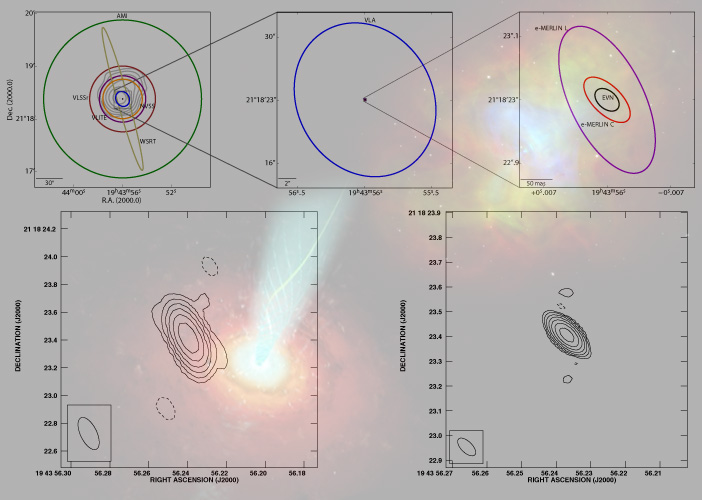Daily Image
03-05-2016HESS J1943+213: a non-classical high-frequency-peaked BL Lac object
| Submitter: | Samayra Straal and Joeri van Leeuwen |
| Description: | One of the main goals of observers is to identify the objects in the sky such that they can better understand their nature. Sometimes it is not so straight forward to identify an object, its properties may indicate very different natures. In that case we come up with the big guns and try every possible observational approach to get to know more about the object. HESS J1943+213 is an unidentified TeV source that is likely a high-frequency-peaked BL Lac (HBL) object but also compatible with a pulsar wind nebula (PWN) nature. Each of these enormously different astronomical interpretations is supported by some of the observed unusual characteristics. In order to finally classify and understand this object we took a three-pronged approach, through time-domain, high angular resolution, and multi-frequency radio studies. Our deep time-domain observations with the Arecibo telescope failed to uncover the putative pulsar powering the proposed PWN. We conclude with ~70% certainty that HESS J1943+213 does not host a pulsar. Using radio observations that probe different angular scales we find that the source consists of a compact core and an extended structure, while for PWNe a single component is expected. Moreover, investigating the obtained radio flux density at similar wavelengths and angular scales, we find that its 2013 flux density is about one-third lower than detected in 2011 observations with similar resolution. This radio variability of the core strengthens the HBL object hypothesis. Overall, we rule out the PWN hypothesis and conclude the source is a BL Lac object. The consistently high fraction (70%) of the flux density from the extended structure then leads us to conclude that HESS J1943+213 must be a non-classical HBL object. In the image you can see on the background (left) an artist impression of an active galaxy, of which BL Lac objects are a subclass. The other background image shows the famous Crab nebula, which is a combined supernova remnant, PWN. The top figure shows the different angular scales our radio observations probed where the extended structure is over-plotted in the left top graph. The bottom panels show the observed e-MERLIN compact core at 1.5 (left) and 5 GHz (right). The results are presented in ApJ (in print) by Samayra Straal, Krisztina Gabanyi, Joeri van Leeuwen, Zsolt Paragi and other collaborators and can be found here: http://arxiv.org/abs/1603.01226 |
| Copyright: | Foreground images: S.M. Straal, K.E. Gabanyi. Background images: NASA/NRAO/HST |
| Tweet |  |
